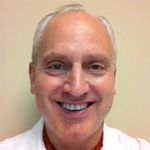“I’m the Decider! (Is That OK with You?)”
Today, after reviewing a CT scan (and screwing my courage to the sticking-place) I went into an exam room, looked a patient in the eye and said: “The liver lesions have started to grow again. I think we need to change your treatment.”
Craig R. Hildreth, MD

Today, after reviewing a CT scan (and screwing my courage to the sticking-place) I went into an exam room, looked a patient in the eye and said:
“The liver lesions have started to grow again. I think we need to change your treatment.”
When sorting out updates from one’s oncologist, it comes as no surprise that this one is filed under the heading “Adios, Amigos.” Could it be perhaps that such a reaction is a bit premature? Notice that I didn’t say all is lost, but just that I would like my patient to consider trying a different anti-cancer medicine. Will the patient agree or not? This singular moment, frequently described by TV sports commentators as “decision time,” is daunting-and unavoidable in the lives of cancer patients. Our patients face many choices during their illness, starting with, “Should I take this regimen or that regimen, or should I even take any treatment at all?” leading to, “How long should I stay on chemotherapy?” and often ending with “Is it time to stop and consider hospice care?”
Throughout these scenarios dwells a common worry: “What will be the consequences of my decision?” On the one hand, chemotherapy or biological therapy frequently produces toxic side effects, but still, with treatment comes the chance to reduce suffering and maybe even live longer. How do oncologists conclude what is the right choice, and how much input should patients have in making decisions about their care?
Hey, relax-this topic has been studied extensively by the gurus. We even have a name for it (and an acronym): SDM, or shared decision-making, where oncologists explain the benefits and risks of a treatment, patients share their own thoughts and concerns, and then a collaborative decision is made that relieves anxiety, improves communication, fosters more appropriate and cost-effective use of our medical resources, and leaves everyone satisfied.
There is a slight glitch: shared decision-making works perfectly only when one has the gift of soothsaying. If I knew beforehand that such-and-such chemotherapy was going to be a so-and-so home run, I would sure as heck prescribe it tout de suite. Since I have zero ability to foresee the future, my patients, like all patients contemplating treatment, must accept the twin dangers of distressful side effects and an unsuccessful outcome. The science of medicine is harshly unyielding. Favorable statistics are scant comfort if I’m the one who falls off the survival curve, thus leaving me eulogized as part of a number in a table in an article in a medical journal read mainly by geeks like me. This would be a sorry ending to a fateful office visit where hope was the goal of the day. Simply reviewing percentages of this and that with patients may not reconcile their fears.
But, soft! What about the gentle art of medicine? Any joker with a reasonable command of the language can recite the side effects or statistics. There is more to it than this. Oncologists, like ancient trees, are layered with rings of experience. It is our duty to use this wisdom to help our patients make a pragmatic decision about taking treatment, one that they feel comfortable with, if not optimistic about. Our duty to our patients requires that we go beyond regurgitating the pros and cons of a treatment and interpret the nuances of a patient’s psyche and the dynamics of their family. Despite the growth of shared decision-making, I believe that patients simply do not know enough about the blessings and perils of modern cancer care to make the right choice based on data alone. They need sage advice from one who has seen this situation countless times before. Our patients deserve to have their oncologists collect all the pieces of the case: the goals, risks, logistics, psychological factors, caregivers, costs, and then, combined with and blessed by the ineffable magic of human interplay, guide them toward a decision that no matter what happens is never remembered with regret.